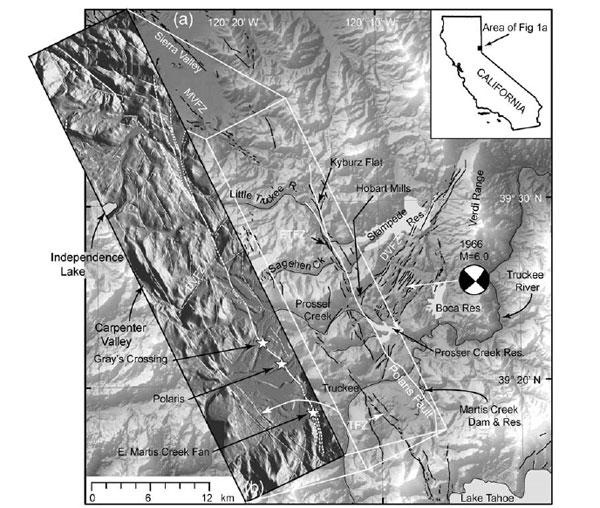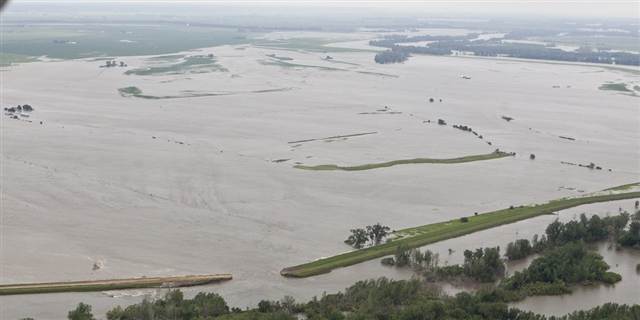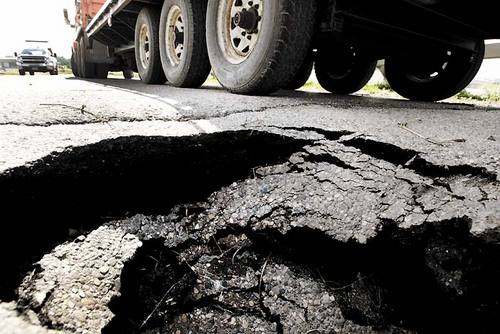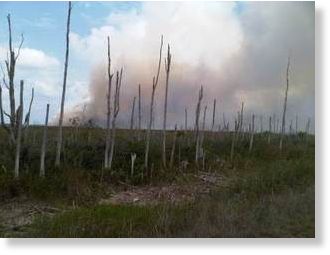
© BSSA/USGS/USACERegional map showing location of the Polaris fault and selected regional faults from the U.S. Geological Survey (USGS). The inset topographic map shows high-resolution airborne LiDAR imagery, with the Polaris fault shown as a bold white line.
You'd think in a seismically active area like California that every potentially earthquake-producing fault to be found would've been identified. It turns out there are plenty of such faults hiding in the ground, and one of them has just been found.
And this fault holds the potential of producing more than just
an earthquake - it could also release a flood from a nearby dam.
Scientists with the U.S. Army Corps of Engineers were inspecting the Martis Creek Dam, which sits just outside Truckee, Calif., and about 35 miles upstream from Reno. It is one of 10 dams in the United States that has "urgent and compelling" safety concerns, according to the Corps, which owns the dam. Data from the most recent evaluation revealed that, not only does the dam have significant leakage, it also lies in close proximity to not two, but three fault zones.
The newly discovered, active, 22-mile-long strike-slip fault is named Polaris for the old mining town it runs through (by contrast, the
San Andreas Fault is more than 800 miles long).
The Polaris Fault was discovered using laser imaging technology known as LiDAR, which was used as part of the U.S. Army Corps of Engineers' evaluation of the dam. LiDAR emits laser pulses down toward the ground from an airplane - even through dense vegetation - to get high-resolution topology maps. Once researchers stripped off the heavy pine tree layer from the maps, they found evidence of the fault sitting just 200 meters from the dam.
"We weren't expecting it at all," said Lewis Hunter, a senior geologist for the U.S. Army Corps of Engineers Sacramento District.




